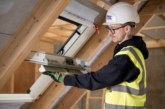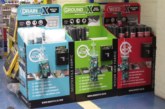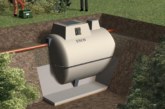
With home technology becoming more accessible and in demand, Mark Shelford, Heating Category Manager at Primaflow F&P, explores the key starting points for independent merchants when it comes to introducing and promoting smart home products in-branch.
Smart home technology is becoming increasingly popular as more individuals desire control over every aspect of their home via a smartphone app — from adjusting the lighting and heating, to monitoring home security and even customising showering experiences.
However, it can prove to be a challenge for merchants to know how to promote these products in-branch and help customers understand the value proposition. Products such as the Google Mini and the Ring doorbell may, for example, be grabbing consumer attention, but many other smart home products need better promotion.
Promoting in-branch
Whilst more customers are shopping online, it remains essential that product displays are maximised in traditional branch layouts. Some branches organise displays by category or brand, which can result in products sitting next to their non-connected counterparts. It is therefore important to enable shoppers to easily identify the smart home product offering and the benefits of these devices, focusing primarily on sleek interfaces and connectivity.
Even if merchants do convince a customer to buy, many first-time smart home installers will find they are out of their technological depth when it comes to installation, which may result in returned goods. Consequently, retail as we know it must evolve to better communicate and demonstrate what each product does and why consumers should embrace smart home technology in their lives.
Supporting installers
There are many ways in which merchants can support their installer customers — from video tutorials to instruction manuals and offering telephone support. Guiding customers where to start the smart home journey can help ease the transition to a fully connected home for the end user.
A part of that process is identifying customers’ needs and explaining the variety of different smart home products available. These include:
Smart thermostats: Smart thermostats are becoming increasingly popular due to their ability to manage energy costs. Most, if not all, enable consumers to change the temperature of their home, or in some cases individual rooms, remotely from their mobile, tablet or PC. Installation usually involves removing the existing thermostat and connecting the wires to the smart thermostat. This can be done in less than 20 minutes.
Smart security: Improving home security through a range of video doorbells, security cameras and alarms allows users to stay connected and keep their homes protected. Many devices feature built-in motion sensors which detect activity around the property and send instant notifications to the users’ smartphone, tablet, or PC.
Fitting devices can take between 15 to 30 minutes without making permanent modifications to the property.
Smart showers: Smart bathroom products are still relatively new to the market but have great potential. For instance, smart showers retain all the benefits of digital showers, but enable users to programme and save specific shower settings for later use.
As the system involves installing a new shower and controller, this typically requires half a day depending on accessibility and expertise.
Smart lighting: Smart light bulbs are one of the simplest ways to introduce and demonstrate the ease with which some smart home products can be installed. Users can simply replace an existing bulb and adjust lighting from their smartphone. There are a range of options, including dimmable, colour changing and cool to warm bulbs to suit customers’ needs.
Leaning on suppliers
Building relationships with suppliers may seem an obvious thing to do, but if you aren’t already, it is definitely worth doing. Suppliers can share tips and tricks on promoting smart goods and ensure you are up to date with all the latest available technology.
Strong business links can also lead to better prices and terms. For example, why not ask if it’s possible to order some products in smaller or larger quantities to better fulfil customer requirements? Many wholesalers, such as Primaflow F&P, will note your needs and help to fulfil them. Wholesalers also often run promotions and deals which may include smart products.
Alternatively, ask suppliers whether it’s possible to be notified when new product images or videos are available, so you can use them on social media or in-branch. Furthermore, Primaflow F&P’s website enables merchants to check live-stock levels and prices with online ordering available 24/7.
By working together in a smarter way, we can improve returns and ensure people get to live in smarter homes.
For more information on the latest deals across the full Primaflow F&P range, head to: https://www.primaflowfandp.co.uk/deals









